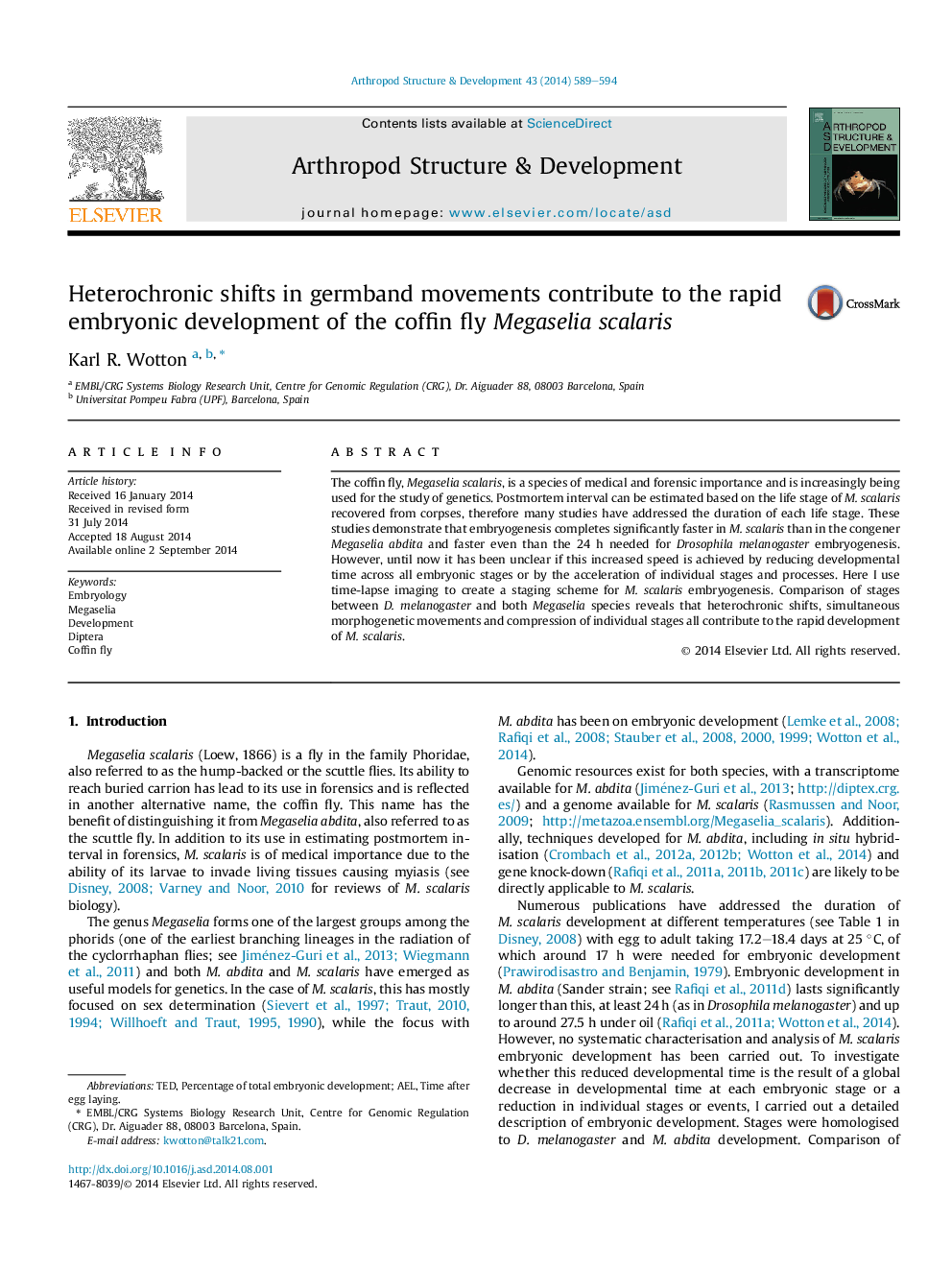| Article ID | Journal | Published Year | Pages | File Type |
|---|---|---|---|---|
| 2778670 | Arthropod Structure & Development | 2014 | 6 Pages |
•Megaselia scalaris embryogenesis stages were classified using time-lapse imaging.•M. scalaris develops faster than both Drosophila melanogaster and Megaselia abdita•Heterochronic shifts of germband, serosa, nerve cord and midgut development occur.•A number of morphogenetic movements occur simultaneously in M. scalaris•The time needed to complete some stages is compressed.
The coffin fly, Megaselia scalaris, is a species of medical and forensic importance and is increasingly being used for the study of genetics. Postmortem interval can be estimated based on the life stage of M. scalaris recovered from corpses, therefore many studies have addressed the duration of each life stage. These studies demonstrate that embryogenesis completes significantly faster in M. scalaris than in the congener Megaselia abdita and faster even than the 24 h needed for Drosophila melanogaster embryogenesis. However, until now it has been unclear if this increased speed is achieved by reducing developmental time across all embryonic stages or by the acceleration of individual stages and processes. Here I use time-lapse imaging to create a staging scheme for M. scalaris embryogenesis. Comparison of stages between D. melanogaster and both Megaselia species reveals that heterochronic shifts, simultaneous morphogenetic movements and compression of individual stages all contribute to the rapid development of M. scalaris.
Graphical abstractFigure optionsDownload full-size imageDownload as PowerPoint slide
